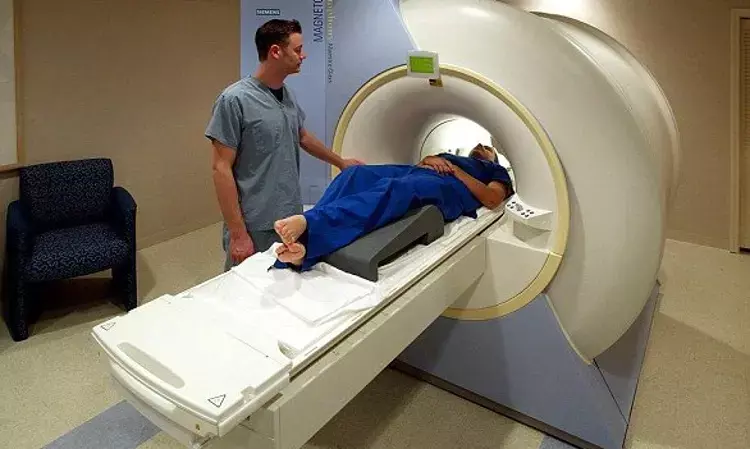- Home
- Medical news & Guidelines
- Anesthesiology
- Cardiology and CTVS
- Critical Care
- Dentistry
- Dermatology
- Diabetes and Endocrinology
- ENT
- Gastroenterology
- Medicine
- Nephrology
- Neurology
- Obstretics-Gynaecology
- Oncology
- Ophthalmology
- Orthopaedics
- Pediatrics-Neonatology
- Psychiatry
- Pulmonology
- Radiology
- Surgery
- Urology
- Laboratory Medicine
- Diet
- Nursing
- Paramedical
- Physiotherapy
- Health news
- Fact Check
- Bone Health Fact Check
- Brain Health Fact Check
- Cancer Related Fact Check
- Child Care Fact Check
- Dental and oral health fact check
- Diabetes and metabolic health fact check
- Diet and Nutrition Fact Check
- Eye and ENT Care Fact Check
- Fitness fact check
- Gut health fact check
- Heart health fact check
- Kidney health fact check
- Medical education fact check
- Men's health fact check
- Respiratory fact check
- Skin and hair care fact check
- Vaccine and Immunization fact check
- Women's health fact check
- AYUSH
- State News
- Andaman and Nicobar Islands
- Andhra Pradesh
- Arunachal Pradesh
- Assam
- Bihar
- Chandigarh
- Chattisgarh
- Dadra and Nagar Haveli
- Daman and Diu
- Delhi
- Goa
- Gujarat
- Haryana
- Himachal Pradesh
- Jammu & Kashmir
- Jharkhand
- Karnataka
- Kerala
- Ladakh
- Lakshadweep
- Madhya Pradesh
- Maharashtra
- Manipur
- Meghalaya
- Mizoram
- Nagaland
- Odisha
- Puducherry
- Punjab
- Rajasthan
- Sikkim
- Tamil Nadu
- Telangana
- Tripura
- Uttar Pradesh
- Uttrakhand
- West Bengal
- Medical Education
- Industry
DCE-MRI plus DWI-MRI can accurately distinguish head and neck paraganglioma from schwannoma

New Delhi, India: The use of DCE-MRI in addition to DWI-MRI can help in accurately differentiating head and neck paragangliomas (HNPGL) from schwannoma, finds a recent study in the journal Head & Neck. This may do away with the need for additional imaging and preoperative biopsy in most cases.
HNPGLs and schwannomas (HNSs) are common tumors originating in carotid space and jugular fossa and can be difficult to diagnose. Differentiation between the two becomes important from a clinico-radiological perspective as the prognosis and therapeutic strategy differ according to the type of lesion.
Morphological assessment with conventional magnetic resonance imaging (MRI) sequences has limited specificity to distinguish between paragangliomas and schwannomas. The use of dynamic contrast‐enhanced (DCE)‐MRI to assess the differences in microvascular properties through pharmacokinetic parameters can provide additional information to aid in this differentiation.
Smita Manchanda, All India Institute of Medical Sciences, New Delhi, India, and colleagues hypothesized that DCE-MR imaging parameters obtained via quantitative and semi-quantitative methods can be used to characterize these masses.
For this purpose, the researchers performed a prospective study on MR characterization of neck masses between January 2017 and March 2019, out of which 40 patients with (HNPGLs) (33 lesions) and schwannomas (15 lesions) were included in this analysis.
MR perfusion using dynamic axial T1WI fat-suppressed fast spoiled gradient recalled sequence with parallel imaging was performed in all the patients, in addition to single‐shot turbo spin‐echo axial diffusion-weighted imaging (DWI) and routine MRI. The ROI‐based method was used to obtain signal‐time curves, permeability measurements, and mean apparent diffusion coefficient (ADC) to differentiate paragangliomas from schwannomas.
Statistical analysis was done to assess the significance and establish a cutoff to distinguish between the two entities. The available images of DOTANOC PET/CT (34 lesions) were analyzed retrospectively. Correlations between the perfusion, diffusion and molecular PET/CT parameters were done.
Key findings of the study include:
- Paragangliomas had a higher wash‐in rate, wash‐out rate, Ktrans, Kep, and Vp; while schwannomas had a higher relative enhancement, time to peak, time of onset, brevity of enhancement, and Ve.
- Among the perfusion parameters, Kep (area under curve (AUC) 0.994) and Vp (AUC 0.992) were found to have the highest diagnostic value.
- In diffusion‐weighted imaging, paragangliomas had a lower mean ADC compared to schwannomas.
- The SUVmax and SUVmean were significantly associated with Ktrans, Kep, and Vp in paragangliomas.
"DCE‐MRI in addition to DWI‐MRI can accurately distinguish HNPGL from schwannoma and may replace the need for any additional imaging and preoperative biopsy in most cases," wrote the authors.
Reference:
The study titled, "Dynamic contrast‐enhanced magnetic resonance imaging for differentiating head and neck paraganglioma and schwannoma," is published in the journal Head & Neck.
DOI: https://onlinelibrary.wiley.com/doi/10.1002/hed.26732
Dr Kamal Kant Kohli-MBBS, DTCD- a chest specialist with more than 30 years of practice and a flair for writing clinical articles, Dr Kamal Kant Kohli joined Medical Dialogues as a Chief Editor of Medical News. Besides writing articles, as an editor, he proofreads and verifies all the medical content published on Medical Dialogues including those coming from journals, studies,medical conferences,guidelines etc. Email: drkohli@medicaldialogues.in. Contact no. 011-43720751


